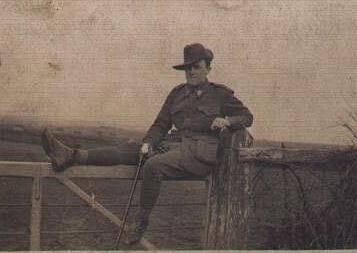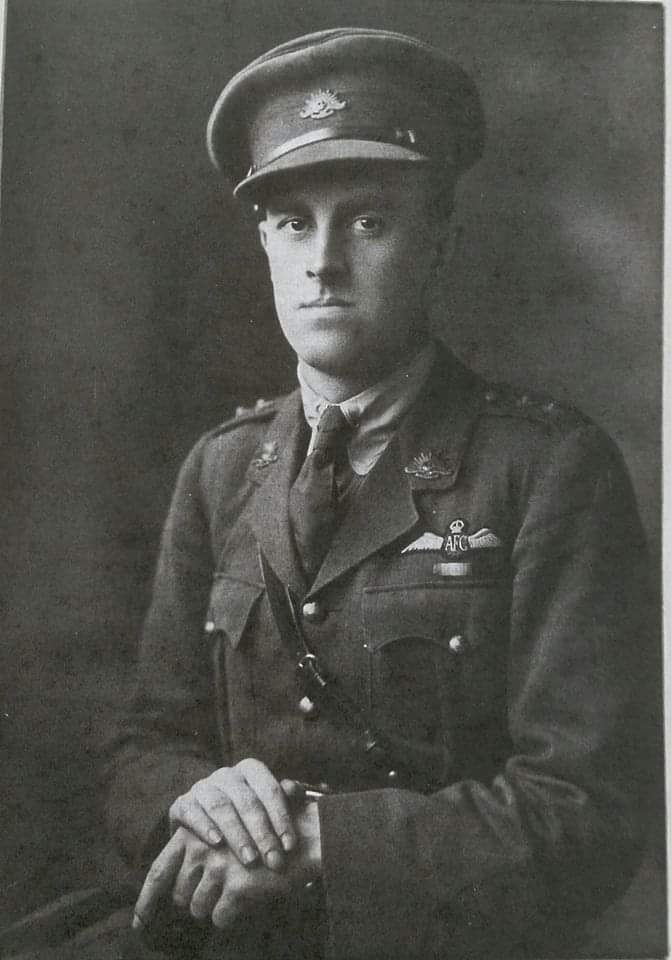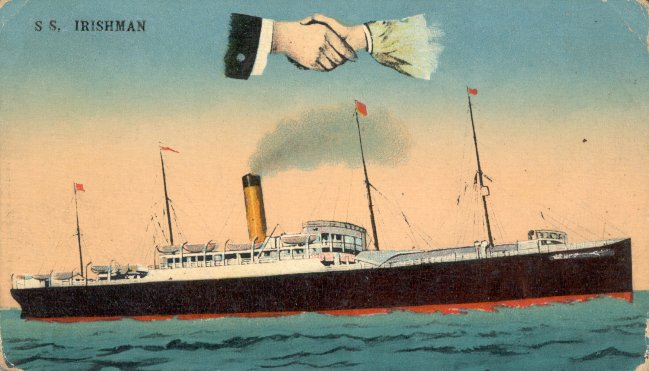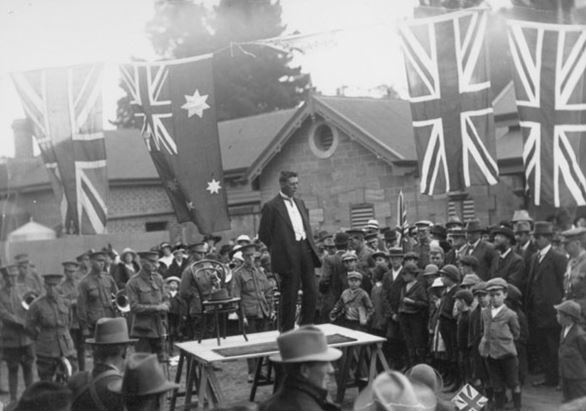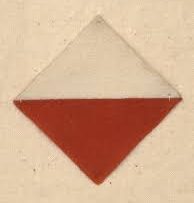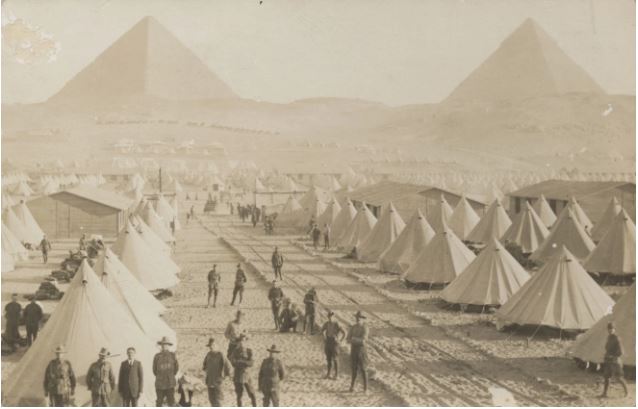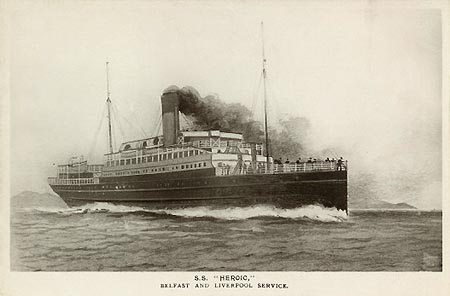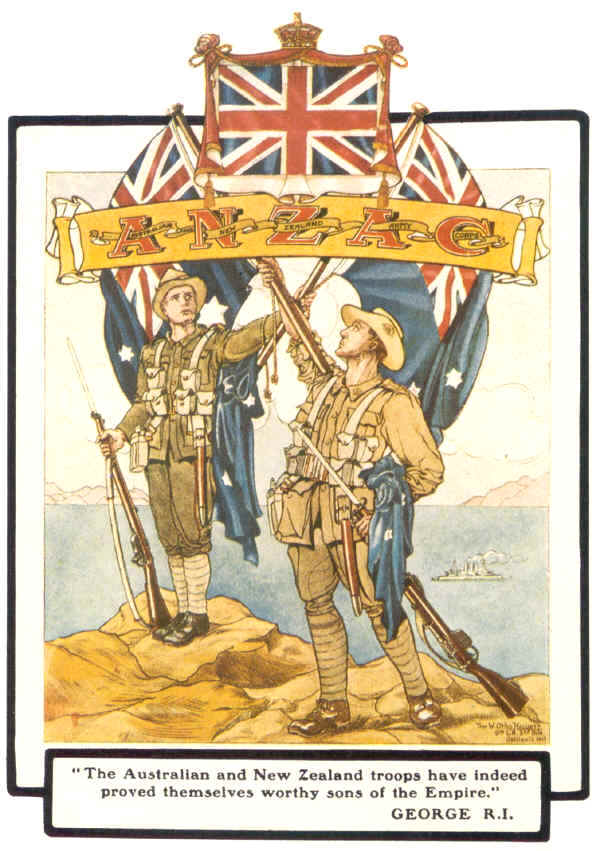In this blog, I continue the story of my Gt Uncle Georges’ journey. As mentioned in my earlier blog 11 – ANZAC Gt Uncle George – A Lancashire ‘Digger’ George was part of the rear party that was the last to be withdrawn from Gallipoli on the 19th December 1915.
The rear parties embarked on “SS Heroic” and landed back on the Greek island of Lemnos shortly after day break.

When George first went to Gallipoli back in September 1915 he and the 24th Bn departed from the Greek island of Lemnos. The island was in fact only 50 miles from the Dardanelles and due to its close proximity, and its sheltered harbour at Mudros bay, it was chosen to be the supply point as well as the main embarkation and dis-embarkation point.

The troops that had been withdrawn from the Gallipoli peninsular were in a shabby condition and many of them were lean and worn. High numbers were in bad health and all had lost weight and strength. Some of the earlier parties of the 24th Battalion to leave Gallipoli were conveyed on warships to Imbros with the remainder being sent to Lemnos.
In early December 1915, the Australian brigades moved into camps in the western hills of Lemnos. Between 4th and 20th of December, the 1st and 2nd Australian Division’s (comprising 5,965 and 7,209 men respectively) were based at camps at Sarpi. George, as one of the last to leave Gallipoli went to Mudros and it is thought he and his comrades from the 24th Bn were camped at Sarpi.
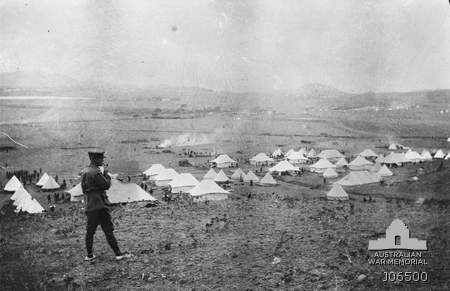
With the irony of war, the men who were the last to leave the battlefield, men who had volunteered for what had been deemed as the forlorn hope, appeared to have been forgotten. There packs had been left for them at Mudros harbour and after disembarking, they had to carry their packs, marching five or six miles and crawled into camp as if they had done nothing worthy of commendation. Bully beef, bread, jam and a few questions from their pals who arrived earlier were all that greeting George and his party on their arrival.
Conditions in the troop camps were often inadequate, with General Monash actively seeking to improve the situation, in terms of the lack of tents and field kitchens. However, mail from Australia had been held up at Mudros due to the evacuation and the abundance of parcels and letters from home provided the troops with a moral boost.
During rest periods troops would leave the camp to buy eggs, grapes and figs from the local Greek villagers. The YMCA provided entertainment facilities for the troops during their rest periods on Lemnos, including concerts attended by the Australian nurses.
ANZAC battalions are reported as having played cricket matches on the island, with nurses joining the spectators. A few miles from the camps, many troops visited the local natural hot spring bath-house at Therma. It became one of the most frequented “resorts” on the island.
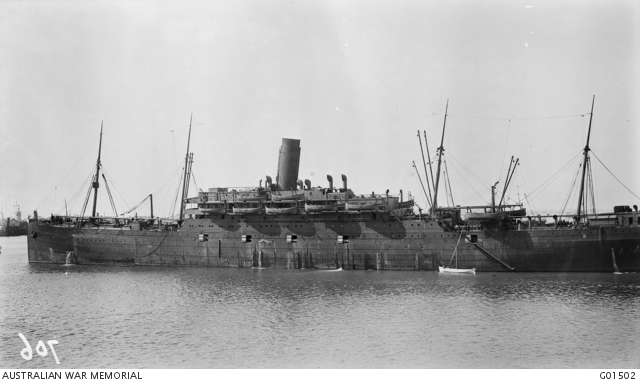
On the 6th January 1916, the Bn left their camp at Sarpi and boarded HMT Minnewaska, departing Mudros harbour on Lemnos on the 8th and arriving at Alexandria on the 10th January 1916 where they were immediately entrained for the new Australian base at Tel El Kabir where the Battalion received considerable reinforcements and undertook further refitting and training.
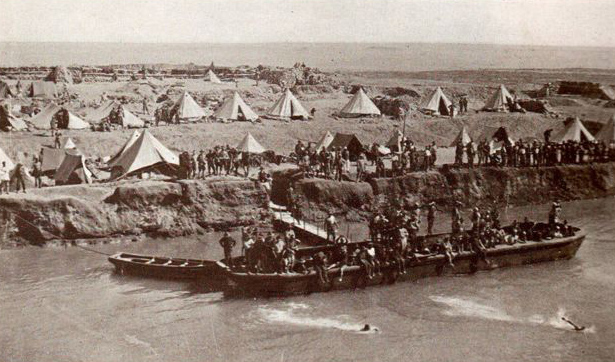
The troops had to undertake various training courses such as learning about artillery and the transport, setting up and firing of such guns. Other training courses covered subjects such as map reading, meteorology, and interpreting reconnaissance photos taken from aircraft.
The defence of the Suez Canal was vital to Allied shipping. The canal was the quickest route between Britain and countries around the Indian and western Pacific oceans. Since its opening in 1869 the Suez Canal had featured prominently in British policy and concerns. The Convention of Constantinople of 1888 by the European Powers guaranteed freedom of navigation of the Suez Canal.

Among its great advantages were as a line of communication and also the site for a military base as the well equipped ports at Alexandria and Port Said made the region particularly useful.
The beginning of 1915 saw the action of World War One extend to Egypt and Palestine. Between 26th January and 4th February 1915 a German-led Ottoman Army force advanced from Southern Palestine to attack the Suez Canal, marking the beginning of what became known as the Sinai and Palestine Campaign.
The 100 mile stretch of the Canal was divided into three sections for defence.
Suez to the Bitter Lakes,
Deversoir to El Ferdan,
El Ferdan to Port Said,
Plus a HQ and genera reserves at Ismalia.
These defences were augmented by the presence in the Suez Canal of HMS Swiftsure, HMS Clio, HMS Minerva, the armed merchant cruiser Himalaya and HMS Ocean near Qantara, Ballah, Sallufa, Gurka Post and Esh Shatt respectively, with the French protected cruiser D’Entrecasteaux just north of the Great Bitter Lake, HMS Proserpine at Port Said, the Royal Indian Marine Ship Hardinge south of Lake Timsah and north of Tussum, with the French coastal defence ship Requin in Lake Timsah. The canal was closed each night during the threat.
British Headquarters estimated German and Ottoman casualties at more than 2,000, while British losses amounted to 32 killed and 130 wounded. The Ottoman Suez Expeditionary Force suffered the loss of some 1,500 men including 716 prisoners.
In another of my earlier blogs I looked at the story of Seaman Gunner George Edward Flint a sailor from Melton Mowbray who was involved in the Defence of the Suez Canal whilst serving aboard HMS Swiftsure when he assisted in the burial of over three hundred Turks following their failed attempt to take control of the canal.

The British subsequently allocated a large defence to protect the canal against future attacks.
The beginning of February 1916 brought orders for a move to the desert East of the Suez Canal, which was again threatened by the Turks and on the 2nd February, the Battalion left their base at Tel El Kabir and entrained for Ismailia to take up a section of the Canal Zone Defences.
On arrival at Ismailia, the Battalion detrained at Moascar and marched on the night 2nd/3rd February to “Ismailia Ferry Post” where it bivouacked before moving on the next day, crossing the Canal on ferries and pontoon bridges and marching across the desert in a heat of 120˚ to a spot near the hill Kataib el Kheil about 10 miles East of Ismailia where a prominent sandhill lies called the “Sphinx”.

On arrival at the “Sphinx”, the Battalion immediately took on entrenching work for its defence and the whole Battalion was engaged preparing the position which consisted of 1780 yards of trench with machine gun emplacements and wire entanglements along the whole front. The trenches were usually in soft drift sand and had to be shoveled out by hand. All food and water had to be carried on camels, and at times the water ration was down to ½ gallon per day.

Camels brought rations and water to them over the sand. The troops went unwashed but lived well and healthy in the dry atmosphere of the desert. Sports were carried out under extreme difficulties and sandstorms buried their equipment and filled in their recently dug trenches.
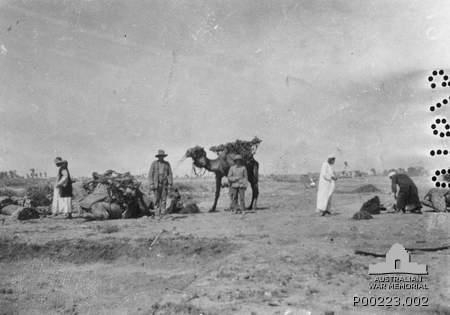
The health of the men remained good and Company’s not on actual digging duties were on outpost duties of 48 hours shifts so that each platoon had its turn in the advanced firing line. The position was of great importance as it stretched across the main caravan route from El Tassa, the point from which the Turks made their attack in 1915 on Ismailia.
The work carried out the Battalion was spoken of in the highest terms by the G.O.C. who visited the position on several occasions as it was the extreme RH Flank of the 2nd Division.
When March arrived, the Battalion were told they were going to France and a new outlook filled the troops with great expectations.
On the 5th March, the Battalion handed over the Canal defences to the New Zealand Mounted Rifles which was completed by 12.00Hrs. During their time in Egypt defending the Canal Zone, the 24th never actually came into contact with any Turkish attacking forces.
The Battalion marched or dragged their burdened frames back over the sand to the Canal. Carrying full kits and blankets, men began to drop out before two miles had been covered. Water bottles were emptied in the first half-hour and with no means of replenishing the supplies, the troops tramped on till the column became a line of stragglers.
Half way on the journey, they stumbled on some horse troughs, and men stuck their heads down and drank like beasts, defying the Officers who forbade them to touch this polluted water.
When Ferry Post was reached on the night of the 5th/6th where they bivouacked, the water tanks of the other units there were besieged and emptied in defiance of all attempts to check the thirsty men. Weaker men cam drifting into camp until daylight the following morning.

It was reported that of all the strenuous marches accomplished by the Battalion whilst on active service, this journey over the heavy sand, on a day marked by the heat of a most oppressive nature, must have pride of place.
The next day the Battalion crossed the Canal and pushed on through Ismalia to Moascar. On passing the ordnance store, all ‘old’ rifles were exchanged for the newer Mk VII version.
On arrival at Moascar, they pitched camp and remained there until the evening of the 19th/20th during which preparations began for their departure for the Western Front and they carried out marching and field work.
On the afternoon of the 18th, the Battalion was inspected by His Royal Highness The Prince of Wales who inspected the Brigade and the Battalion. The Battalion, after hearing an address by Sir William Birdwood, marched passed HRH in Columns of four, afterwards, the camplines were inspected.
New orders were received on the 19th for the Battalion to entrain for Alexandria and the Battalion spent the rest of the day cleaning up and preparing for entrainment. At 08:00 on the 20th, the Battalion embarked aboard 3 troopers and sailed from Alexandria at 16:30.
HMT Lake Michigan – 14 x Officers and 636 Other Ranks,
HMT Magdalena – 10 x Officers and 306 Other Ranks,
HMT City of Edinburgh – 1 x Officer and 50 Other Ranks
In the hold of the Magdalena was the Battalion band under the command of the bandmaster, R L Pogson practised diligently throughout the voyage.
At 09:30 on the 23rd, the Battalion received a message that the HMT Minneapolis had been torpedoed and was sinking. Her position was reported as 12 miles due North of their current position. The speed of their vessel was increased and course changed. At 12:30, they received a further message that the Minneapolis was still sinking. A further message was received at 17:00 that the submarine had been sighted 62 miles NE of Valetta this morning resulting in the convoy changing course again.
Orders were received on the 24th March from Admiral Malta that they were to proceed direct to Marseilles, where they arrived on the 26th at 15:30, disembarking at 19:00.
On arrival at Marseilles, the 24th Battalion formed up on the wharf and marched with the band playing military music to the railway station where they entrained at 23:45Hrs for the journey from Marseilles to Flanders.

According to the war diary, the Battalion numbers were made up of 14 Officers, 603 Other ranks and 9 prisoners!
In my next blog about Uncle George I will take a look at his journey after arriving at Marseilles in France.
